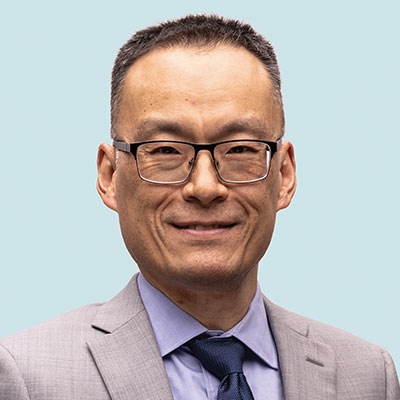David T. Chang, M.D., Ph.D., D.A.B.N.S.
Complex Spine Neurosurgeon located in Minnesota and Western Wisconsin
Though spinal stenosis may occur at any age, it’s more common in older adults because of the degenerative changes that occur in the spine. Spinal stenosis may not cause problems, but once symptoms start, they tend to worsen over time. Board-certified neurosurgeon David Chang, MD-PhD, DABNS, specializes in complex spine conditions like spinal stenosis, performing surgery when necessary. To schedule a consultation, call the office or book an appointment online today.

Spinal Stenosis Q&A
What is spinal stenosis?
Spinal stenosis is a narrowing of the space in your spinal canal, the area that serves as the passageway for your spinal cord.
When this space narrows, the structures that surround the spinal canal may compress or irritate the spinal cord or the nerve roots, resulting in various types of pain.
Spinal stenosis may affect any part of the spine, but it most often occurs in the cervical or lumbar spine. The narrowing generally occurs from the degenerative changes that occur in your spine as you get older, including conditions such as herniated discs or osteoarthritis.
However, some people are born with a narrow spine, making them more susceptible to spinal stenosis. The narrowing may also occur after a traumatic injury to the spine.

What are the symptoms of spinal stenosis?
The symptoms of spinal stenosis are similar to a pinched nerve. With spinal stenosis, you may experience:
- Tingling, numbness, or burning sensation
- Radiating pain
- Dull ache
- Stiffness
- Sharp, shooting pain
- Arm or leg weakness
- Difficulty walking or maintaining balance
- Loss of bowel or bladder control
The symptoms you experience may help determine the location of your spinal stenosis.
Not everyone with spinal stenosis has symptoms. However, once they occur, they tend to get worse over time. If you have any of these symptoms, schedule an evaluation with Dr. Chang.
How is spinal stenosis diagnosed?
Dr. Chang diagnoses spinal stenosis after a comprehensive history and physical. He reviews your symptoms and examines your spine. Dr. Chang has you undergo diagnostic imaging, such as X-rays, CT scans, or an MRI to confirm a diagnosis.
How is spinal stenosis treated?
Initial treatment for spinal stenosis focuses on alleviating your symptoms. Your plan may include:
- Anti-inflammatory medication
- Muscle relaxants
- Corticosteroid injections
- Nerve blocks
- Physical therapy
For patients experiencing severe symptoms that affect their quality of life, Dr. Chang recommends surgical intervention. For example, to improve the spacing in your spine, he may perform a laminectomy or laminoplasty.
Dr. Chang helps many people with his surgical interventions for complex spine conditions. To discuss treatment options for your spinal stenosis, call the office of David Chang, MD-PhD, DABNS, or book an appointment online today.